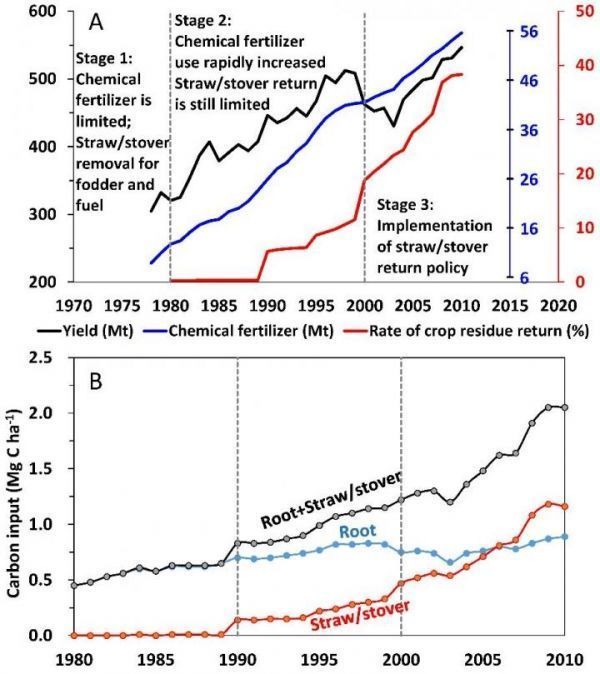China’s croplands have experienced drastic changes in management practices related to fertilization, tillage and residue treatment since the 1980s. The impact of these changes on soil organic carbon (SOC) has drawn major attention from the scientific community and decision-makers because changes in SOC may not only affect future food production but also water and soil quality, as well as greenhouse gas emissions.
However, the underlying mechanisms that dominate the SOC dynamics of Chinese croplands on the national level are still not fully understood. Yet, knowledge of these mechanisms is critical for sustainable management of croplands, and thus supportting an increasing population, while maintaining their environmental function.
Recently, scientists from the Institute of Soil Science (ISS) of the Chinese Academy of Sciences and collaborators conducted a comprehensive study that determined changes in SOC over the last three decades and identified the dominant agronomic, economic and policy drivers behind these changes and their implications for future carbon (C) sequestration in Chinese croplands.
Based on the SOC and associated crop management data from 58 counties representing typical cropping systems across China, they found that the average SOC stock in the topsoil (0-20 cm) of Chinese croplands increased from 28.6 Mg C ha-1 in 1980 to 32.9 Mg C ha-1 in 2011, representing a net increase of 140 kg C ha-1 yr-1.
Read more at Chinese Academy of Sciences Headquarters
Image: (A) Changes in grain yield, chemical fertilizer consumption, and the rate of straw/stover return to soils in China since 1978; and (B) Changes in average C inputs across the 4,060 sites in the 58 counties investigated. (Credit: Institute of Soil Science)


